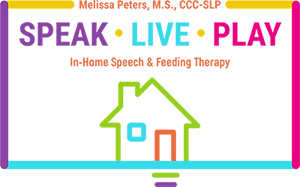Occupational Therapists for Adults
Occupational therapists not only help kids develop independence but also assist adults in accomplishing their daily living activities. OT for adults also helps them find ways in which they can cope with cognitive and physical difficulties. This will ensure that, despite the limitations, an adult can participate in most activities fully.
Generally, occupational therapists assist adults in developing fundamental self-care activities. They also help the individual to indulge in other activities such as household chores, meal preparation, and computer use, as well as leisure activities. Therapists work hand in hand with caregivers to modify these activities and working environments, allowing older people to indulge in various activities comfortably.
How does occupational therapy help Adults?
Occupational therapists are trained to assist adults in achieving independence in their daily activities. Caring for a kid with developmental delay, injury, and cognitive problems can be tough. It becomes even more challenging when they grow up. Unlike a child, it becomes more difficult to lift and carry an adult or even teach them to do new things. These individuals would also love to have their own space and do things without needing any assistance. An occupational therapist will help these individuals get independence when doing various activities, including;
- Moving around the house and using the steps
- Getting out and about in the neighborhood
- Showering, grooming, and other personal care activities
- Helping in household activities
- Taking part in outdoor activities such as hobbies
Adult occupational therapists also play a major role in helping adults and older people maximize their safety. Here are some of the ways a therapist can help in ensuring safety.
- Recommending safe ways for doing everyday activities
- Accessing safety issues at home and providing a solution to prevent possible trip hazards
- Suggesting aids and equipment
- Offering training to caregivers
- Advising on the required modification to the home
How Adult Therapy Differs From Pediatric Therapy
So, how does adult therapy differ from kid’s therapy? Well, adult and kids therapy are completely different. For instance, a two –to three-year-old will obviously talk differently from a 20-year-old. A teen or adult will express their needs and thoughts in a different way than a toddler will. Besides that, adults need some privacy. Despite the mobility issues, changing diapers for a three-year-old will be different from doing so for an 18-year-old.
While these may be suffering from the same issues, the occupational therapist needs to adapt the therapy to suit the adult’s needs. For instance, a therapist might work on how to help a 2-year-old kid maintain focus or sit for a few minutes to do an activity. On the other hand, for a fifteen-year-old, the therapist will help them to learn how to do their homework, groom, and socialize with friends. Additionally, the main problem that 30-year-olds may face is handling various work projects. As such, an OT for adults adapts to solve the problem depending on the individual’s span.
How Occupational Therapists Work with Adults
With adults, the things the therapist works on include organization, planning, computer skills, interview skills, and strategies for handling anxiety. The therapist will customize everything to fit the role of the individual. This makes the adult feel a part of the family. By helping them gain their independence, they will not only fit in the family setting but also society. The individuals can learn how to take care of themselves and be employed.
Occupational therapists for seniors
Elderly occupational therapists specialize in assisting older people in their daily lives. The therapist analyzes the patient’s condition and finds out the right activities or modifications suited to support their physical, emotional, psychological, and environmental needs. They develop specialized exercises that support the needs of the patient. Here are the main benefits of occupational therapy sessions for older people.
Helps keep arthritis at bay
OT for older people offers advice on the relevant modifications required to make their homes and workstations safe and comfortable. This enables the seniors to deal with arthritis, allowing them to continue tackling their tasks normally. If left unchecked, arthritis pain can render a person immobile. The therapist will analyze the condition and take the relevant action.
Generally, arthritis discomfort and pain arise when the patient moves the affected joint. An occupational therapist will help the patient position their legs and other parts into more comfortable positions.
Boosts memory & cognitive skills
As mentioned, with age, our brain weakens. This may lead to certain conditions, such as forgetfulness and dementia. Occupational therapists for seniors also help patients to sharpen their cognitive skills and memory. While severe conditions such as dementia are irreversible, these therapists will prevent the condition from worsening.
Some of the effective exercises that help seniors maintain sharp memory include reading books and solving a crossword puzzle. It is always recommended to start the treatment as early as possible. However, the occupational therapist for seniors can still help in later stages, although in these stages, their focus is to improve the senior’s quality of life with simplified activities and sensory stimulation.
Improves vision
Vision loss is common in older people. The good news is that an occupational therapist can help reduce vision impairment. Just like physical therapy, the therapist will train the patient on various vision therapy techniques that restore proper functioning for the brain and eyes without undergoing surgery.
Elderly occupational therapy assists seniors with different eye problems such as lazy eyes, double vision, dizziness, balance, reading, and strabismus. They begin by evaluating the damage to identify whether the vision problem is repairable or not. After that, they offer customized exercises to fit the patient’s needs.
Increases movement range
As we grow old, our body becomes fragile. Particularly, age takes a toll on our bones, joints, and mental stability. Adult occupational therapists use various techniques that help the patient increase their range of motion. Also known as ROM (range of motion), these exercises help the patients to walk, lift things, and do other activities comfortably.
The exercises decrease stiffness and pain that is often caused by conditions such as arthritis. ROM exercise is different depending on the underlying condition and the body part that is affected. Nonetheless, these exercises will help the patient stretch their muscles and have an easy time while taking part in various activities.
Life transitions
Generally, we undergo numerous throughout our lives. Be as it may, the majority of the toughest transition comes into play when we get old. Seniors often go through rough transitions such as widowhood, retirement, and relocation. Sadly, older people are also forced to say goodbye to their friends and family who pass on before they do. Occupational therapy will help the seniors through this transition by eliminating loneliness. The OT for older people creates activities that will help them cope with the rough transitions.
Helps to cope with chronic pain
There are various main causes of chronic pain, normal aging being one of them. It is characterized by traumatic injuries, nerve damage, and injuries that take ages to heal. Unfortunately, chronic pain can lead to loss of independence, where the senior may lose control over daily activities. Adult occupational therapists use several approaches to manage pain and discomfort. They also equip the patient with various adaptive ways to assist them in going about their daily chores. These approaches include;
- Pacing activities
- Proactive pain control
- Muscle tension reduction
- Neuromuscular reduction
- Safe body ergonomics and mechanics
A trusted confidant
The last thing a parent or a senior relative would want is to cause pain to a loved one. Most often, the kids take care of their ailing senior parent. And, since the parent wouldn’t want to see their kids sad, they often lie about their condition. Occupational therapists serve as a trusted confidant for the seniors. Unlike speaking to their kids, a senior will feel comfortable talking to an occupational therapist about some of the challenges they are going through. The best thing about this is that the therapist can find an easy solution to make the elderly patient feel comfortable. They are also trained on how to speak to the patient and make them feel better.
Conclusion
When kids, adults, and seniors are having problems doing daily chores because of developmental delay, injury, aging, or other conditions, an adult occupational therapist can assist. The primary goal for occupational therapists is to assist kids, adults, and older people to achieve more every day. They equip the patient with the skills they need to make their life easy at home, school, or work. These therapists work hand in hand with families and caregivers to help the patient achieve independence and confidence.



